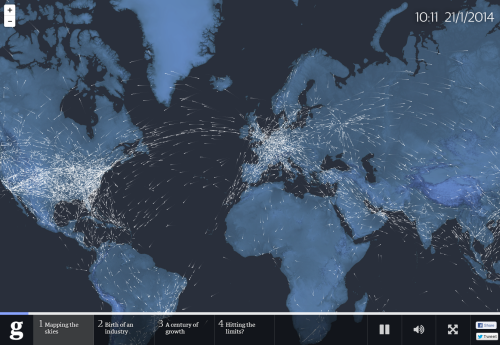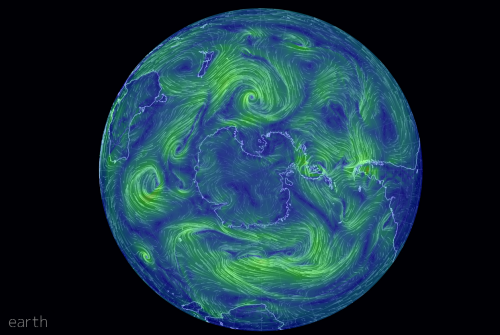Tens of thousands of swirling ocean currents were captured and presented by NASA’s Goddard Space Flight Center in this animated map that creates a cinematic cartographic experience. These are surface currents that cover the period June 2005 to December 2007; the result of physical observation and modelling.
The simplicity of the final map belies the complexity and computing power required to generate the results but rather than creating a detailed and complex graphic to expose how much effort and work went into the map, the work is left to shine and to amaze the viewer.
NASA themselves describe the results as creating a ‘visceral experience’. Indeed, if cartography is about connecting and generating an emotional response then they succeeded. One of the rare animated maps that uses a soundtrack to good effect.
Numerous versions of the animation can be found on NASA’s web site here.


